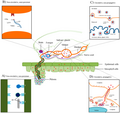Fichier:Viruses-08-00303-g001.png

Taille de cet aperçu : 635 × 599 pixels. Autres résolutions : 254 × 240 pixels | 509 × 480 pixels | 814 × 768 pixels | 1 085 × 1 024 pixels | 2 171 × 2 048 pixels | 3 190 × 3 010 pixels.
Fichier d’origine (3 190 × 3 010 pixels, taille du fichier : 1,5 Mio, type MIME : image/png)
Historique du fichier
Cliquer sur une date et heure pour voir le fichier tel qu'il était à ce moment-là.
| Date et heure | Vignette | Dimensions | Utilisateur | Commentaire | |
|---|---|---|---|---|---|
| actuel | 28 novembre 2020 à 13:04 |  | 3 190 × 3 010 (1,5 Mio) | Guest2625 | Uploaded a work by Ralf G. Dietzgen, Krin S. Mann, and Karyn N. Johnson from Dietzgen, R.G.; Mann, K.S.; Johnson, K.N. Plant Virus–Insect Vector Interactions: Current and Potential Future Research Directions. Viruses 2016, 8, 303. https://www.mdpi.com/1999-4915/8/11/303/htm with UploadWizard |
Utilisation du fichier
La page suivante utilise ce fichier :
Usage global du fichier
Les autres wikis suivants utilisent ce fichier :
- Utilisation sur en.wikipedia.org